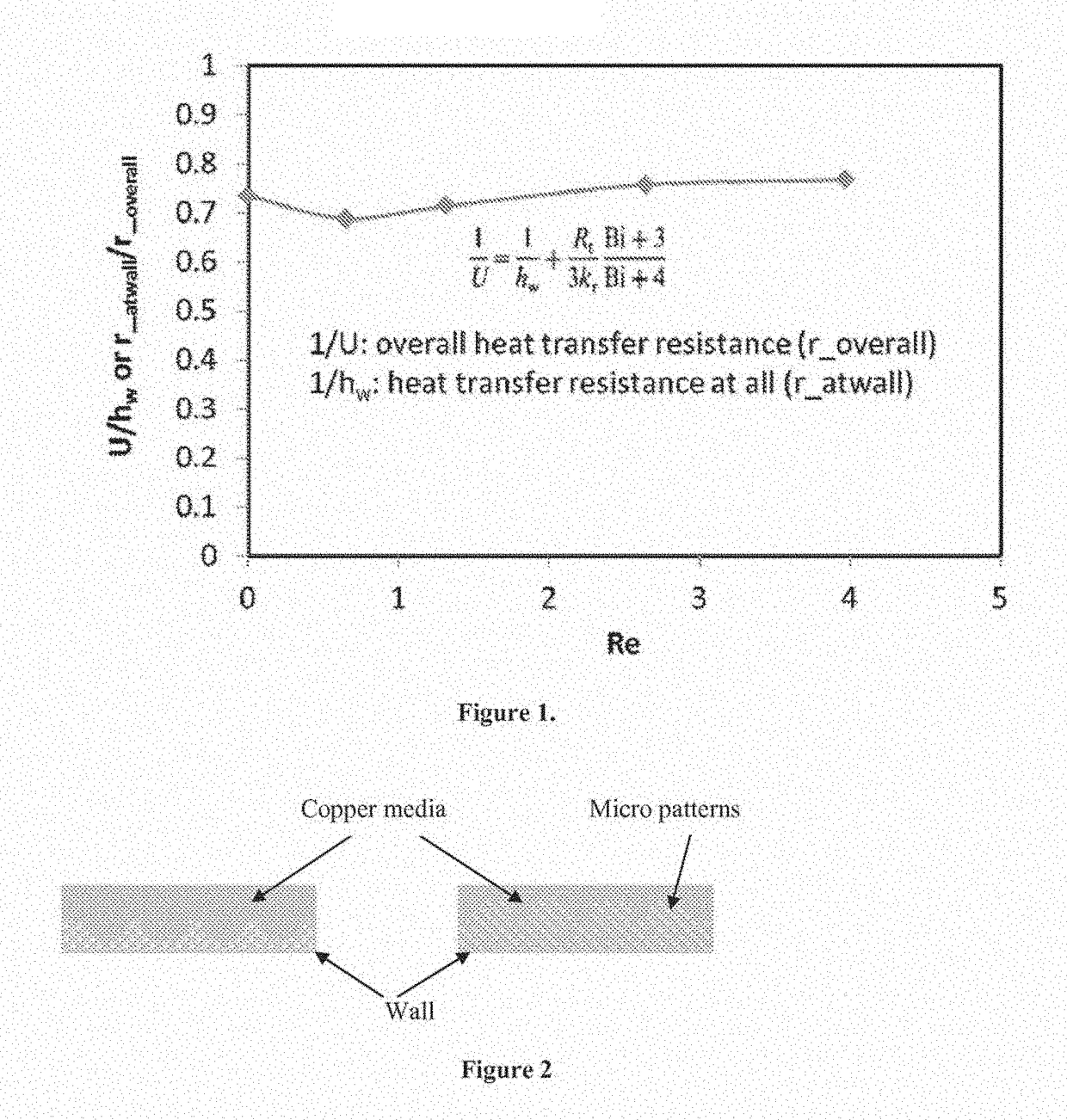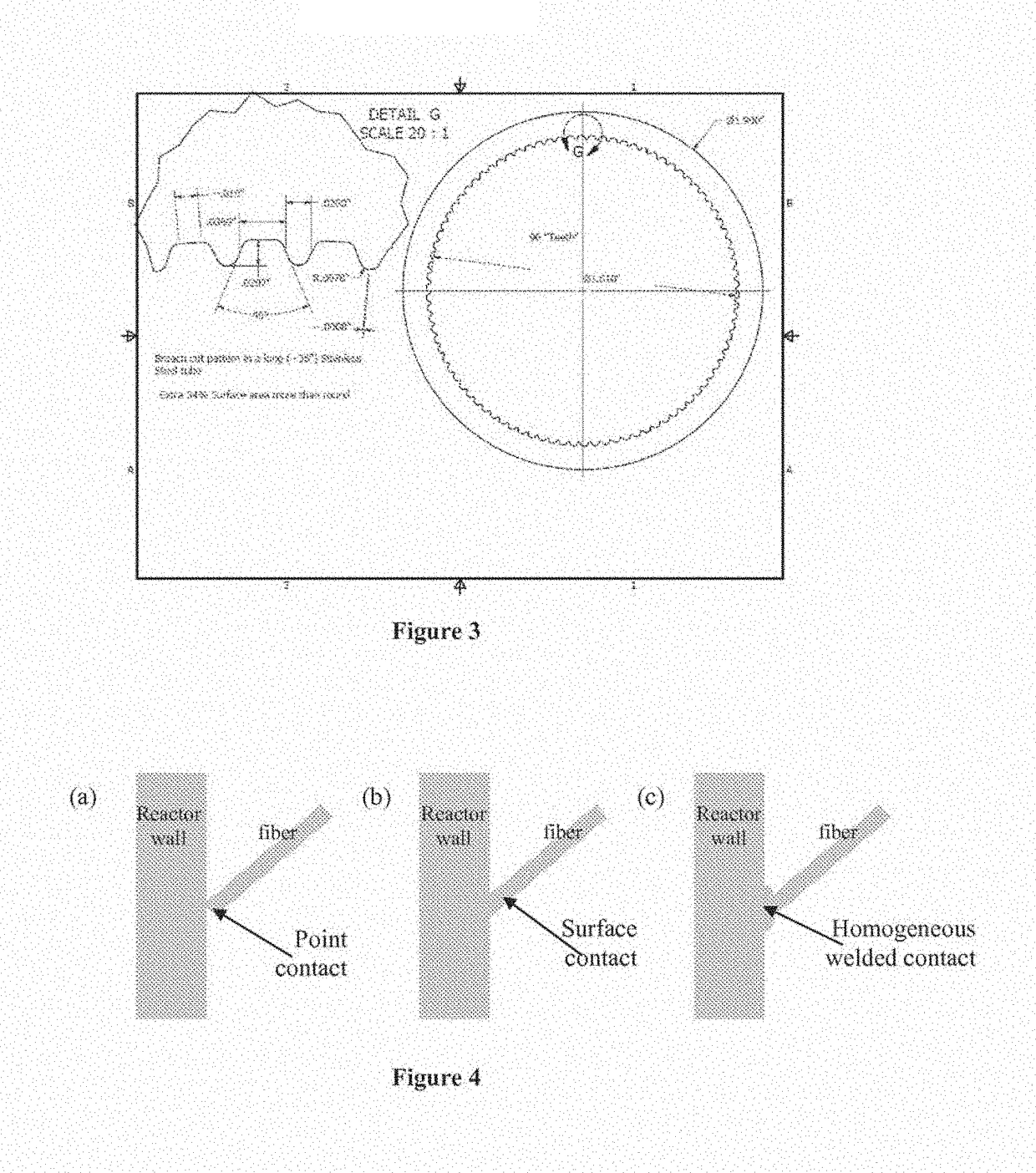Method for improving wall heat transfer in a chemical reactor
a technology of chemical reactors and walls, applied in the direction of physical/chemical process catalysts, lighting and heating equipment, soldering equipment, etc., can solve the problems of not being able to enjoy the improvement of effective thermal conductivity, too big or rigid typical packed particles or extrudates to access the surface of micro-organisms, etc., to improve the efficiency of heat transfer process, and increase the effect of heat transfer area
- Summary
- Abstract
- Description
- Claims
- Application Information
AI Technical Summary
Benefits of technology
Problems solved by technology
Method used
Image
Examples
example 1
Fine Structural Patterns to Increase Heat Transfer on the Reactor Wall
[0030]As shown in FIG. 1, the heat transfer area on the inner reactor wall can be increased by cutting groove patterns on the surface and creating small bumps on the inner surface using solder chemicals. Because the microfibrous media are very flexible, they can be deformed to match the roughened the surface of the wall. The heat transfer area is increased by these fine structures.
[0031]In practice, the edges of the fine structures are generally smoothed. The groove pattern in actual use is shown in FIG. 2. Heat transfer area was increased by about 34%.
example 2
Improving Contact Efficiency at Reactor Wall
[0032]Various contacting styles between the fibers and the reactor wall are shown in FIG. 3. The contact point is formed when the media is not compressed on the reactor wall. There is very limited area to conduct the heat due to the nature of the contact point. The second contact, surface contact, is generated by deforming the surface of copper fibers when a slightly larger diameter microfibrous media is inserted into the reactor tube. This media has a much larger area for heat transfer. The third contact, homogeneous welded contact, is generated by welding the fibers and the reactor wall together, which is typically carried out using solder chemicals. It should generate the largest heat transfer area among these three contacting styles. Moreover, it is the welding contact that creates homogeneous contacting and enables the lower heat transfer resistance.
PUM
| Property | Measurement | Unit |
|---|---|---|
| diameter | aaaaa | aaaaa |
| length | aaaaa | aaaaa |
| diameter | aaaaa | aaaaa |
Abstract
Description
Claims
Application Information
 Login to View More
Login to View More - R&D
- Intellectual Property
- Life Sciences
- Materials
- Tech Scout
- Unparalleled Data Quality
- Higher Quality Content
- 60% Fewer Hallucinations
Browse by: Latest US Patents, China's latest patents, Technical Efficacy Thesaurus, Application Domain, Technology Topic, Popular Technical Reports.
© 2025 PatSnap. All rights reserved.Legal|Privacy policy|Modern Slavery Act Transparency Statement|Sitemap|About US| Contact US: help@patsnap.com



